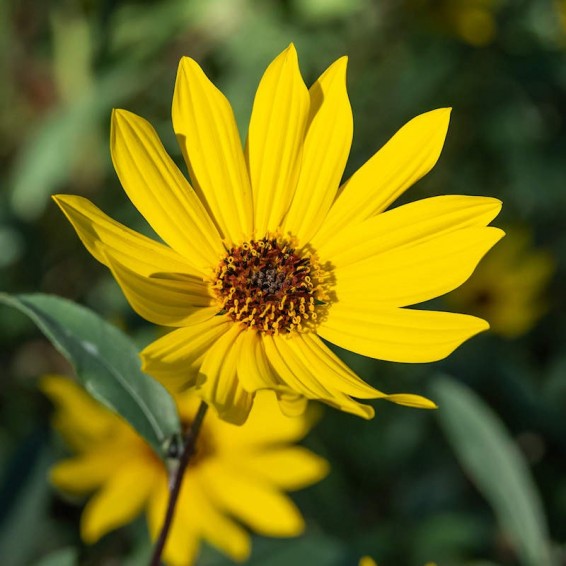Tall Sunflower Seeds
Helianthus giganteus
- HOW TO GROW
- FAST FACTS
HOW TO GROW
Sowing: Direct sow in late fall, planting the tall sunflower seeds 1/2" deep. For spring planting, mix the seed with moist sand and store it in the refrigerator for 30 days before direct sowing. To start indoors, sow Helianthus Giganteus seeds in a flat or individual peat pots, keeping the soil lightly moist and at a temperature of 65-70 degrees F until germination, which usually occurs within 10-20 days. Keep the seedlings moist. When the weather has warmed and the seedlings are well established, transplant outdoors.
Growing: This plant tolerates drought, though it flourishes with regular moisture. It spreads by rhizomes and can be aggressive, especially in moist or rich soil. Plants that are widely spaced or in especially rich soil will reach taller than usual heights, and may need staking or support. This plant attracts bees and butterflies.
Harvesting: For fresh flowers, cut long stems of flowers that have just opened and place them in water immediately; strip the leaves that will fall below the water.
Seed Saving: After their petals drop off, the centers of the flowers will darken and develop tight clusters of seed. Harvest the seed as soon as it ripens, since small birds love to eat it. Cut the heads and spread them out to dry for several days. Thresh the dried heads to separate the seed from the chaff. Store the cleaned tall sunflower seeds in a cool, dry place.
FAST FACTS
Latin Name: Helianthus giganteus
Species Origin: US Native Wildflower
Type: Native Wildflowers
Life Cycle: Perennial
USDA Zones: 2, 3, 4, 5, 6, 7, 8
US Regions: Midwest, Northern, Northeast, Southeast
Seeds per Ounce: 10,500
Stratification: Cold/Wet for 4 Weeks
Germination Ease: Stratify 4 Weeks
Sunlight: Full Sun, Part Sun
Height: 96 Inches
Color: Yellow
Bloom Season: Blooms Late Summer, Blooms Early Fall
Uses: Cut Flowers, Deer Resistant
DESCRIPTION

HOW TO GROW
Sowing: Direct sow in late fall, planting the tall sunflower seeds 1/2" deep. For spring planting, mix the seed with moist sand and store it in the refrigerator for 30 days before direct sowing. To start indoors, sow Helianthus Giganteus seeds in a flat or individual peat pots, keeping the soil lightly moist and at a temperature of 65-70 degrees F until germination, which usually occurs within 10-20 days. Keep the seedlings moist. When the weather has warmed and the seedlings are well established, transplant outdoors.
Growing: This plant tolerates drought, though it flourishes with regular moisture. It spreads by rhizomes and can be aggressive, especially in moist or rich soil. Plants that are widely spaced or in especially rich soil will reach taller than usual heights, and may need staking or support. This plant attracts bees and butterflies.
Harvesting: For fresh flowers, cut long stems of flowers that have just opened and place them in water immediately; strip the leaves that will fall below the water.
Seed Saving: After their petals drop off, the centers of the flowers will darken and develop tight clusters of seed. Harvest the seed as soon as it ripens, since small birds love to eat it. Cut the heads and spread them out to dry for several days. Thresh the dried heads to separate the seed from the chaff. Store the cleaned tall sunflower seeds in a cool, dry place.
FAST FACTS
Latin Name: Helianthus giganteus
Species Origin: US Native Wildflower
Type: Native Wildflowers
Life Cycle: Perennial
USDA Zones: 2, 3, 4, 5, 6, 7, 8
US Regions: Midwest, Northern, Northeast, Southeast
Seeds per Ounce: 10,500
Stratification: Cold/Wet for 4 Weeks
Germination Ease: Stratify 4 Weeks
Sunlight: Full Sun, Part Sun
Height: 96 Inches
Color: Yellow
Bloom Season: Blooms Late Summer, Blooms Early Fall
Uses: Cut Flowers, Deer Resistant





